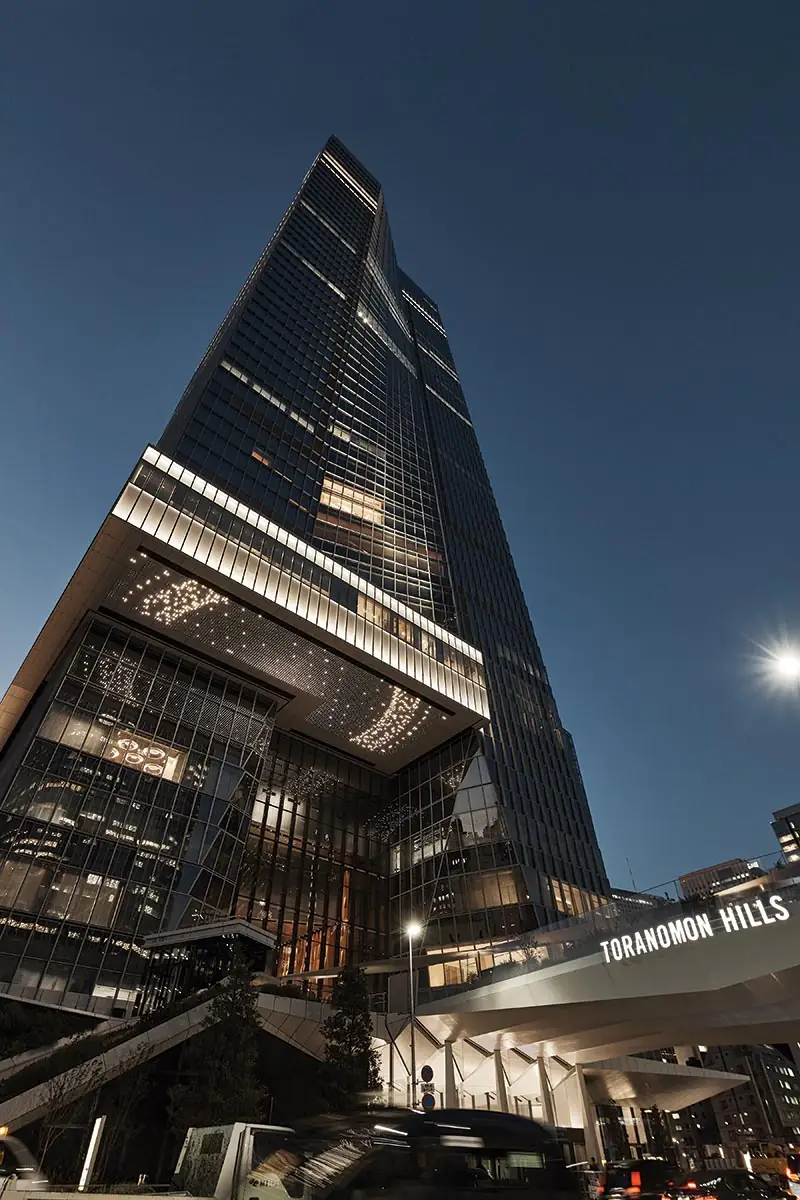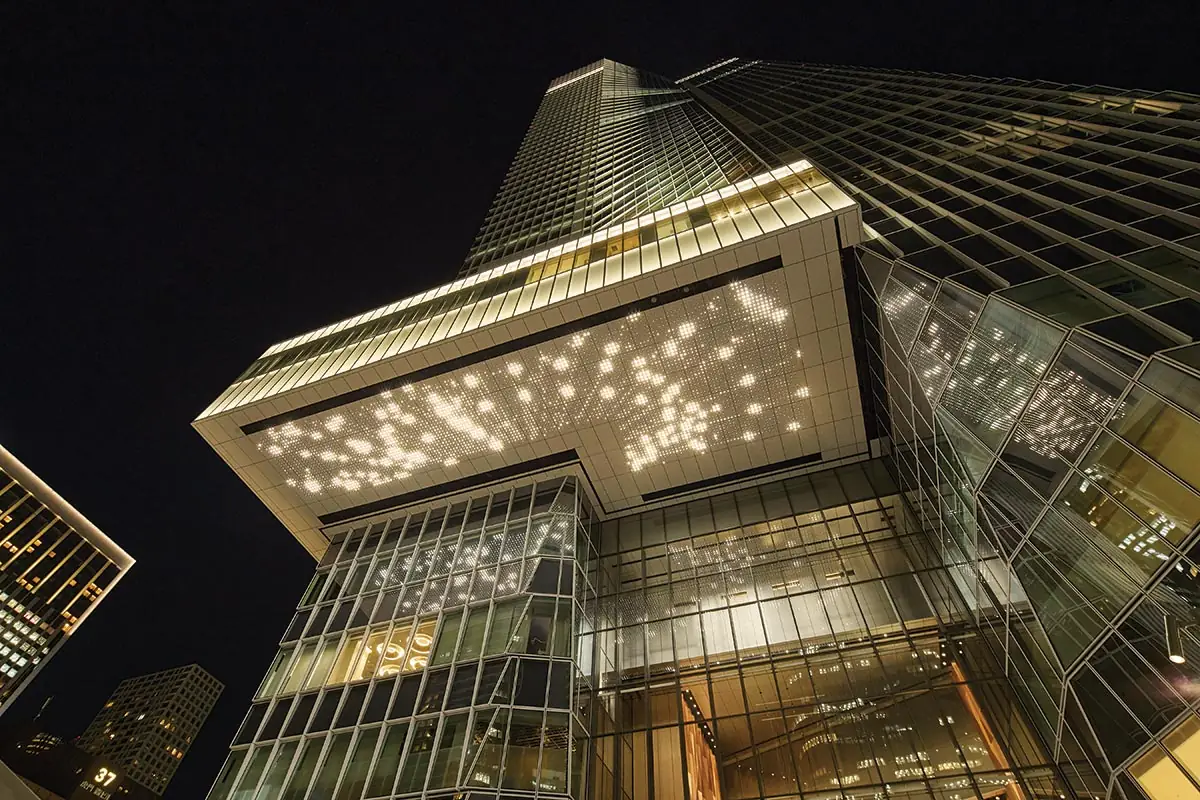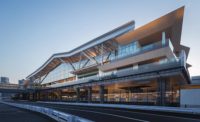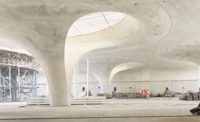Artist Leo Villareal has brought dancing lights to the cables of the Bay Bridge connecting San Francisco and Oakland. He’s illuminated the Thames River in London. His Multiverse transformed a tunnel connecting the East and West Buildings of the National Gallery in Washington, D.C. Smaller-scale interventions have had big impact on individual buildings. At the recently completed Lindemann Performing Arts Center at Brown University by REX, his Infinite Composition of white LED panels over structural columns injects life into the lobby.

Photo © Inki Kang, click to enlarge.
His biggest impact on a building may be his latest. Firmament at OMA’s Toranomon Hills Station Tower, is an emphatic punctuation mark at the tower’s entrance. Like all of Villareal’s work, it is a site-specific piece that, in this case, underscores the building’s role as a gateway to Tokyo’s recent Toranomon Hills development at one end of the newly reconfigured Shintora-dori Avenue. By dynamically illuminating the underside of OMA’s sky bridge, 132 feet above the ground, day and night, the artwork, which, for Villareal was meant to connect to the sky and cosmos, enchants visitors to the building and its belowground metro station as well as passersby on the street. “We had a proposal to do the top of the building, which was one idea,” says Villareal. “But this building occupied a very special location, so it was intriguing to me to activate the bottom of the sky bridge.”
Inspired by artists such as Diego Rivera, Villareal likens the 126-foot-long, L-shaped panel to a mural, the kind that, like Rivera’s, adorn historic buildings. Only here, the reflection of the piece in the tower’s glass skin creates a doubling effect of the constantly moving light show.

Photo © Inki Kang
To some, the 6,000 LED nodes within Firmament may seem to react to the people walking beneath it, but the artwork does not contain sensors. “I did do some interactive pieces early on,” recalls Villareal, “but I found it difficult to create a satisfying experience like that.”
Instead, after spending several nights on-site observing the mixed-use tower, its many spaces, and how people move around it, Villareal created different visual sequences. These are displayed in a random order and for a random amount of time. Layers of sequences are dynamically combined so that observers are not seeing the same thing over and over. “It’s not a loop,” says Villareal. “I’m really shuffling the deck.”
To distinguish the quality of the light in this piece from the ambient light, Villareal used a 4000 Kelvin color temperature. The resolution of the graphics is relatively low compared to some of Villareal’s other more recent work. “I like how pared down it is and how it evokes something like an early kind of video game, which probably resonates in Japan,” says the artist. Using customized tools and working with products from Color Kinetics, the artwork incorporates LED nodes, power supplies, network switches, and computers, and is meant to be a permanent fixture on the building. “We have the ability to do some debugging remotely if we need to, but fortunately we haven’t had any issues, and the software we create is very robust.”
Villareal has described his pieces as digital campfires, bringing people together to observe a phenomenon. “The public nature of the work—that it’s available and free to everyone—is very important to me.”
Video © Inki Kang






Post a comment to this article
Report Abusive Comment